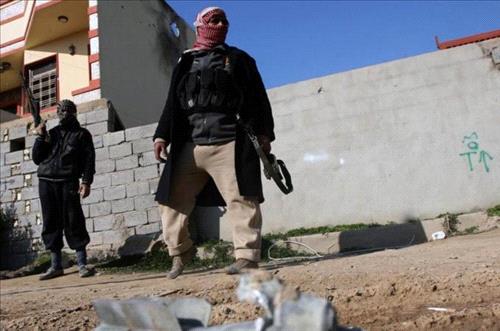Ammon News - Paris, January 6, 2014 – The Washington Post and the International New York Times had the same front-page headlines today. Both had to do (as the Times put it) with the “Power Void” in the Mideast, deploring that America’s decade of attempting to a new order in the region now is blowing up in its face.
It was just a decade ago when U.S. troops razed Fallujah, leaving it, as a Marine officer put it to a journalist, “like Dresden” – referring to the colossal firestorm that Allied bombers created in that German city in northern Germany in 1945, in the worst single massacre in Europe during the second world war.
The comparison with what happened to Fallujah has to be exaggeration, as Fallujah had a population of only 350 thousand to begin with, whereas Dresden had added to a prewar population of some 650 thousand many refugees from the Soviet offensive in the East. Fallujah just looked to the Marine like pictures of Dresden in 1945. That was not a coincidence.
The original attack on Fallujah, in 2004, followed the murder by a mob of four Blackwater corporation mercenaries escorting a supply convoy. The mob burned the bodies and hung them from a bridge. The American attack followed just a year later, to expel jihadists from the city and ‘teach a lesson.’
Since last weekend the black flag adopted by al Qaeda and its allies has flown over Fallujah, and again civilians have fled the city in fear of its complete takeover and destruction, this time by radical Sunni forces, fighting the Shiite-dominated Iraqi government of Prime Minister Nuri Kamal al-Maliki, originally put in place by the American occupation.
The prime minister was warned before the American troop departure that he was vulnerable and had to reconcile himself with the Sunni minority in Iraq – which ruled the country before America deposed Saddam Hussein. But the prime minister refused to listen to good advice, and refused to allow any American troops to remain in Iraq beyond the treaty deadline two years ago.
What would they have done in this situation? Called in U.S. reinforcements to go to Fallujah? That would have started up the American war in Iraq again, but much worse, because fighting in Iraq now is not between Arabs and imperious foreigners with half-baked ideas about remaking what they chose to call the Greater Middle East.
This Greater Middle East has now cast itself into a sectarian civil war. Al Qaeda, or the Islamic State of Iraq in the Levant, as it and its associates now choose to call themselves (ISIS), has support from Saudi Arabia and Qatar, the two activist Sunni states that see a threat of regional domination by Iran, allied with Shiite Hezbollah in Lebanon, close to the Shiite government of Prime Minister Malaki, and supporting Bachar el-Assad’s Syria, now seemingly in the ascendance over the Syrian insurgents backed until now by the West.
And where do the United States and Israel stand in all this? Neither of them is quite sure. Yet it was the two of them that destroyed the stability that once existed in the region by deciding to destroy Saddam and his Ba’ath regime. He ruled a population that was in majority Shiite but had just defeated Shiite Iran (with a little help in the way of arms and satellite intelligence from the U.S., in revenge for the Iranians having taken American diplomats hostage after the Ayatollahs’ Revolution in 1979.) However that was an incidental episode in Washington’s policy. The big thing was that Saddam was the object of neoconservative hatred. He was opposed and feared by Israel as leader of the most powerful Arab state. It was decided to take him out. A great mistake. That this also put the Shiites in seems not to have been noticed.
The influential Israeli insiders’ newsletter, DEBKAFiles, wrote earlier this month that Israel’s Sunni enemies have “come together for a mighty push to seize footholds in a vast swathe of Middle East territory, along a line running between Baghdad, Damascus and Beirut. Al Qaeda is turning itself into the Sunni knife for slicing through the Shiite axis linking Teheran to Damascus and the Lebanese Hizbollah. Our military sources say a major escalation of violent confrontation is building up,…and there may be a spillover into Israel and Jordan….”
The letter goes on: “Israel finds itself caught between two equally hostile and dangerous radical forces, both of which enjoy powerful backing. On the one hand the Obama administration is eager to maintain the U.S rapprochement with Iran to the point of backing the brutal Bashar Assad to remain in power. On the other hand, former U.S. ally Saudi Arabia is willing to back Muslim elements close to al Qaeda…for the sake of sabotaging Washington’s current policies. In these circumstances, Israel finds it increasingly difficult to determine which are its friends…and which its foes.”
Nor does the Obama administration know which are its friends nor indeed does it even seem to understand, with the lucidity this Israeli analysis displays, just what its own situation is. All one can really say to Mr. Obama is that American military intervention in the region has been the largest cause of the present chaos. Therefore the isolationist instincts of the American people, displayed recently when the president rashly wanted to bomb Syria, were and remain sound ones. Don’t make things worse.
